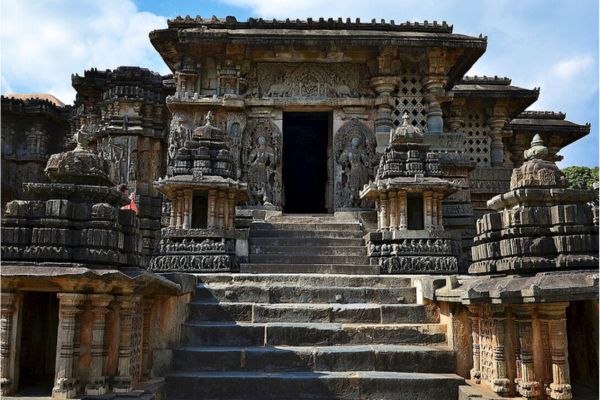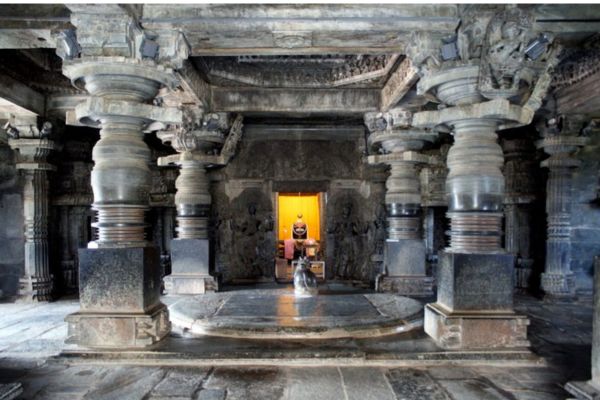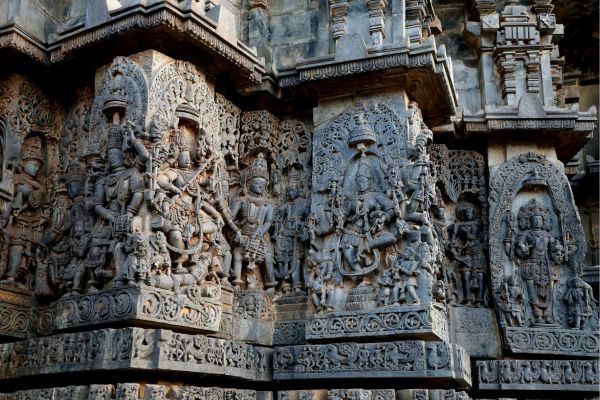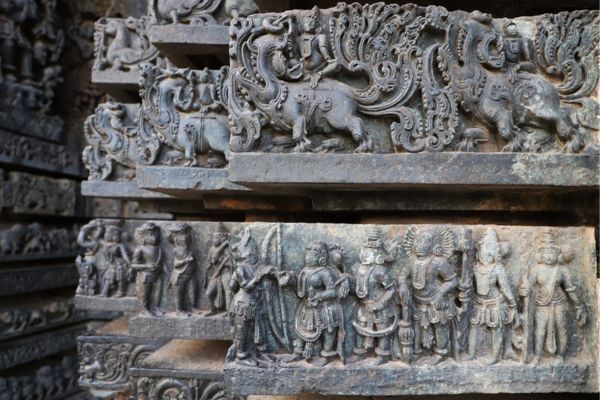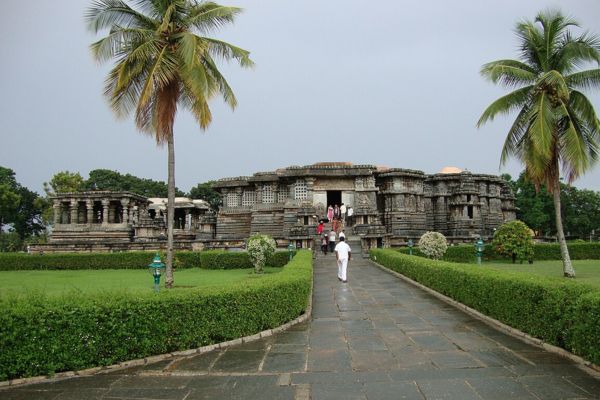
June 2025 | Ahankara/Ego
Om Namah Sivaya
Blessed Self,
Both the concepts of Guru and of the Gurukula System are the alien to the new generation of yoga practitioners. As we understand more and more of Swami Vishnudevanandaji’s life with his Guru, and as we follow the teachings and programmes that he set up as he envisioned, it becomes evident that without the Guru’s grace nothing is possible on the spiritual path. Each of our Ashrams and Centres are set up as Gurukulas (teachers’ homes or spiritual homes) to provide learning opportunities for guests and staff alike.
Surrender and humility were two very important words in Swami Vishnudevanandaji’s teachings. As long as we embrace these two qualities, we find more purpose in our lives, and we begin to cherish and find real happiness, the essence of life.
We are happy to share that the major portion of the renovations at Sivananda Guha (Cave) in Swami Vishnudevanandaji’s favourite place of sadhana, Gangothri, Himalayas, is finally complete and we have conducted the inaugural purification pujas with special priests from South India. Later this month, installation of all the deities that Swamiji had in the Guha during his life time will take place. On July 14th a special Bhandara for Gangothri Sadhus will take place to honour Master Swami Sivananda’s Mahasamadhi day.
During these time difficulties and continued conflicts in the world, let’s all embrace more sadhana and prayers which help us to feel as one and to live in peace and harmony with one another.
May Master and Swamiji’s blessings be with you always.
Pranams,
Prahlada
Sivananda Yoga Vedanta Ashrams & Centres, India
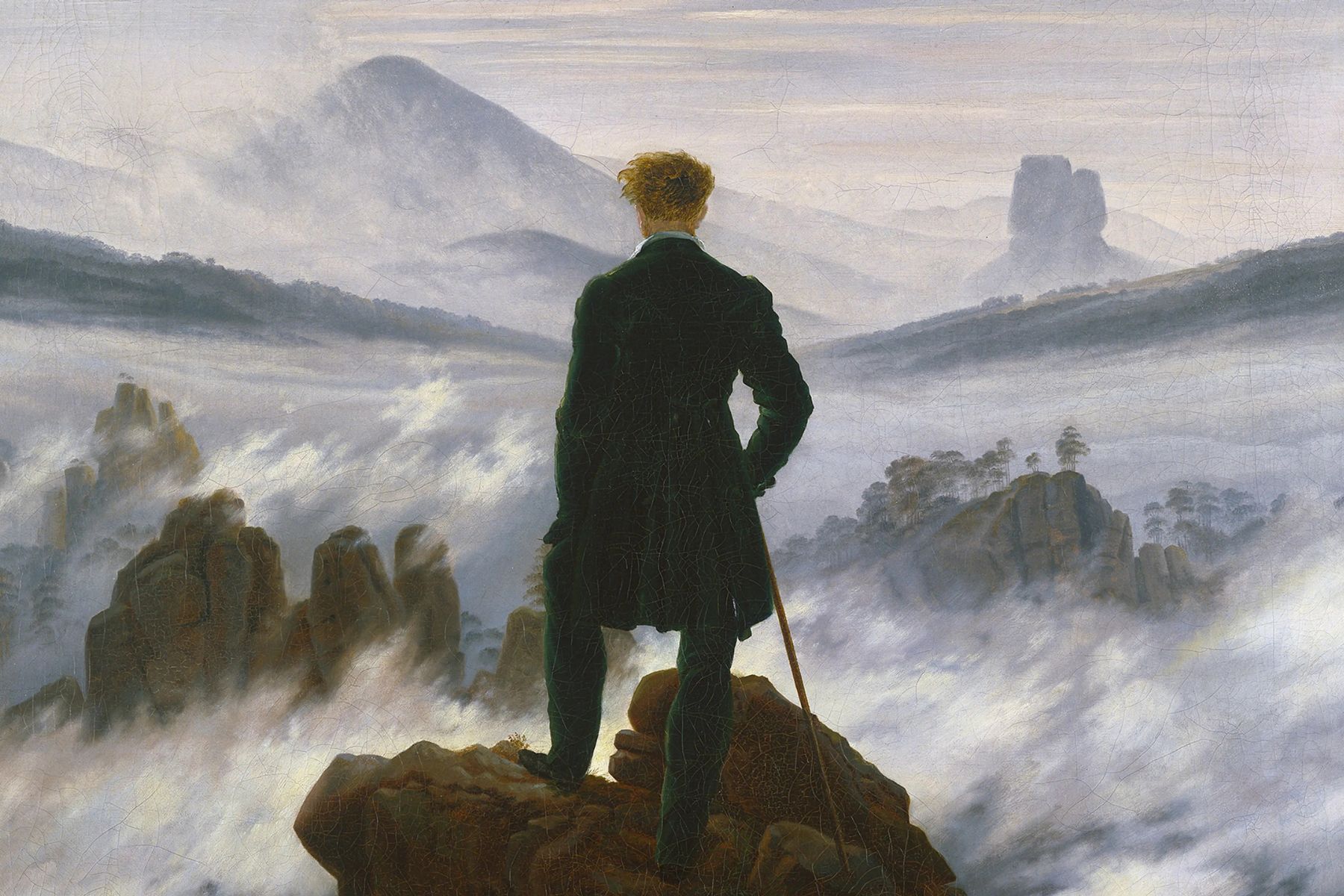
Detail from “Wanderer Above the Sea of Fog”, 1817, Caspar David Friedrich. Hamburg Art Museum/Wikipedia
There are different words for ego in Sanskrit. Patanjali references ‘asmita’, as ‘false ego’ or ego which leads to false identification with mind and intelligence. We also find the word ‘ahankara’ used for egoism, leading to identification with ‘I’ and ‘mine’. Swami Sivananda has used the word ‘ahankara’ extensively, so we are focusing on it as our theme this month. We all have experience with ego, and we each have our own ego. It seems easy to recognise ego in the actions of other people, but considerably more difficult to recognise ego in our own thoughts, words, and interactions. We tend to justify ourselves far too often. We create reasons why we have behaved with ego; why we’re ‘right’. We know that, on the path of yoga, ego may be our biggest challenge and our biggest stumbling block. In our process of evolution, ego enters into the mind, only because of the presence of buddhi, the intellect. The intellect is a necessary instrument of seeing, and ego and intellect, together, are the two higher parts of the mind. They perform important positive functions. A healthy ego helps to remind us who we are, where we stand, and what qualities and strengths we have to offer to the world. However, egoism and conceit are indeed great obstacles.
The antidote is humility. Maintaining a humility about our own practice helps us to be humble in our everyday interactions as well. In fact, it is often said that the most troubling ego of all is the spiritual ego, the belief that I am a better and more serious practitioner than you. I am a more spiritual person. I am more advanced, more sincere. In general, those who speak about their practice are often not so practiced and those who remain quiet have often experienced greater depths of understanding and experience. We can forgive ego from other types of professionals, from those with name and fame, but not from those who walk the spiritual path.
Balancing asanas can teach us quite a bit about riding the line in-between things: ego and humility, making an effort and surrendering, accepting and resisting. A complex asana like Vrischikasana, the Scorpion asks us to examine how we see, how we observe ourselves and the world around us, while the “body becomes all eyes”. In this issue of Sivananda Yoga Sandesha we look at how to find balance in Vrischikasana, we share both Swami Sivananda and Swami Vishnudevananda’s words on the kleshas and ahankara. We discover the importance of the pelvic floor for women’s health, hear the story of Krishna’s final teaching for Arjuna, on confidence, discover the intricate Hoysaleswara Temple in Karnataka and how it helps dissolve the ego, and examine the energetic qualities of food.
We hope you enjoy the newsletter and take time to reflect on your practice. As usual, please feel free to reach out to us with your thoughts and feedback at: [email protected]
Snapshots: May Events & Programmes
Inauguration pujas at the cave in Gangotri, a new wheelchair-accessible pathway to the Health Hut in Neyyar Dam, and construction of a new dining hall and thatched-roofed huts for outdoor seating in the Madurai Ashram.
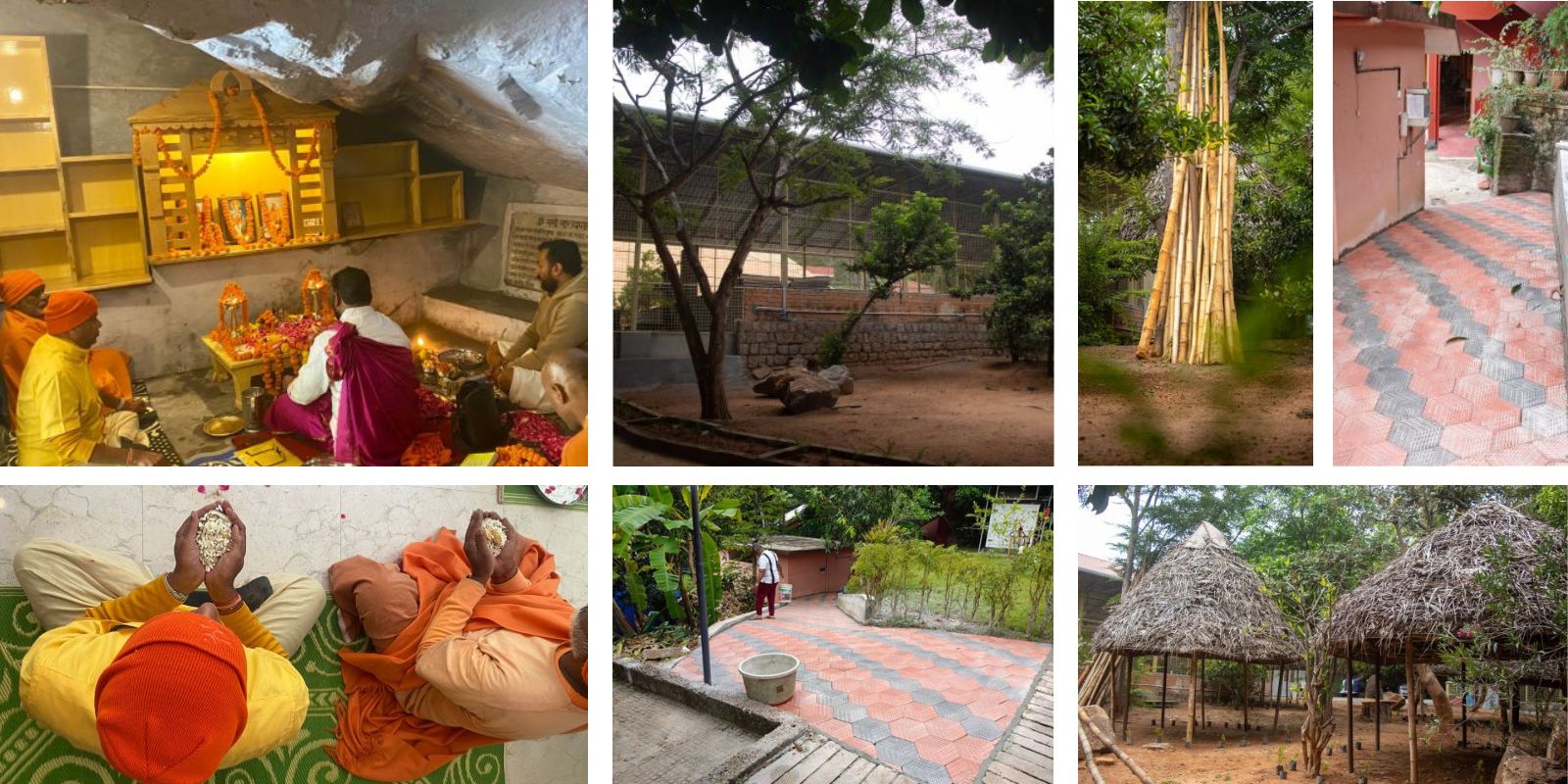
Links/Research: This is Your Brain on Meditation
Less “me” thinking, decreased anxiety, and a greater capacity for empathy, are some of the benefits of daily meditation.
Read more here:
https://www.psychologytoday.com/us/blog/use-your-mind-change-your-brain/201305/is-your-brain-meditation
Spiritual Calendar
June 6 – Ekadasi
June 11 – Full Moon
June 21 – Ekadasi
June 25 – New Moon
Upcoming Courses:
Learn, Practise & Grow with Us!
Teachers’ Training Course (TTC)
June 15 to July 12, 2025
Uttar Kashi, Himalayas
July 20 to Aug 16, 2025
Uttar Kashi, Himalayas
Aug 17 to Sep 13, 2025
Gudur, Andhra Pradesh
For more details, click here
Sadhana Intensive (SI)
October 16-29, 2025
Uttarkashi, Himalayas
For more details, click here
Panchakarma Detoxification Programme (PDP)
June 16 to 30, 2025,
Neyyar Dam, Kerala
July 1 to 15, 2025,
Neyyar Dam, Kerala
For more details, click here
Teachings Excerpt:
Ahankara/Ego by Swami Sivananda
Atman in conjunction with the Buddhi is Ahankara. The basis of Ahankara is Buddhi. As the Buddhi (Bheda Buddhi) is the cause for this differentiation (this little “I”), Buddhi is the cause or seed for Ahankara. Ahamta and Mamata (‘I’-ness and ‘mine’-ness) are Jivasrishti. It is Jivasrishti that binds a man to the world. Isvarasrishti (God’s creation) helps man in his God-realisation.
The seed of mind is Ahankara. Ahankara is development through the thoughts of the mind. As the first thought is the ‘I’ thought and as this ‘I’ thought is at the base of all other thoughts, Ahankara is the seed for the mind. This idea of ‘I’ will bring in its train, the idea of time, space and other potencies. With these environments, the name Jiva accrues to it. Contemporaneously with it, there arise Buddhi, memory, Manas which is the seed of the tree of Sankalpa.
The seed of mind is Ahankara. Ahankara is development through the thoughts of the mind. As the first thought is the ‘I’ thought and as this ‘I’ thought is at the base of all other thoughts, Ahankara is the seed for the mind. This idea of ‘I’ will bring in its train, the idea of time, space and other potencies. With these environments, the name Jiva accrues to it. Contemporaneously with it, there arise Buddhi, memory, Manas which is the seed of the tree of Sankalpa.
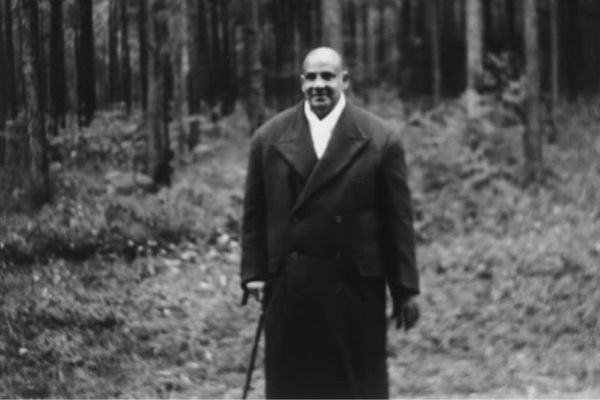
When you are a boy, the Ahankara is not very potent. It is like a shadow in a glass. It gets developed and firm-rooted during your adolescence after you marry and entangle yourself in the achievement of various worldly desires. You are fearless in your boyhood. The moment this little ‘I’ becomes stronger in your, side by side, various sorts of fears, various sorts of desires, a host of delusions take firm hold of you. The world appears to you more real, too.
Ahankara is, after all, nothing. But, tremendous is its influence! Maya means Ahankara. Mind is another name for Ahankara. World means Ahankara. The sprout of Ahankara ramifies here and there with its long branches of ‘mine’ and ‘thine’. It is inveterate. Ahankara wants to live in flesh (Abhinivesa or clinging to life), to eat flesh and to embrace flesh. This is pure Ajnana (ignorance) only. Look at Maya’s deception and wholesale swindling! Beware! Awake! Get Jnana.
Just as the cloud screens the sun, so also this cloud of Ahankara screens the ‘Jnana Surya’, the Infinite Sun of Knowledge, Brahman. You cannot realise God, if you have the least tinge of egoism, if you have the slightest attachment to name and form, if you have the least tinge of Vasana or if you have the least trace of worldly desire in the mind.
When you assert ‘Aham Brahma Asmi’ (I am Brahman), it is Sattvic Ahankara. It is Moksha Ahankara. It will not bind you in any way. It will help you realise Brahman. The fire in a picture will not burn anything. A light in the presence of midday sun will not shine and shed its light. Even so, the Ahankara of a Sattvic person cannot do any harm to any person.
Teachings Excerpt:
Raja Yoga Sutras, from Meditation and Mantras by Swami Vishnudevananda
Ch. 2, v. 6
Drg-darsana-saktyor ekatmatevasmita
Egoism is the identification of the Seer with the instrument of seeing.
The instrument of seeing in this case refers not only to the eyes but also to all the senses. Egoism is manifest when the individual cannot distinguish his Self from his senses and mind. He sees himself as separate from the rest of mankind, reacting to others with a sense of competition rather than cooperation.
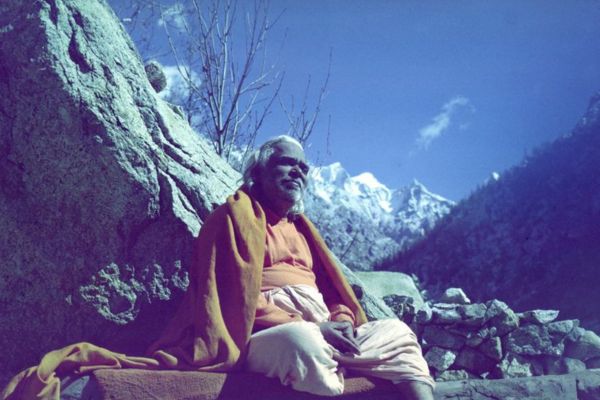
Practice and Teaching Tips:
Balance in Vrischikasana/Scorpion
Few asanas excite the mind as much as Vrischikasana, or the Scorpion. Somehow, when we get it, the body feels alive, alert, watchful. We become aware of using all the parts of the body and mind in perfect harmony. In the ancient Kerala martial art form, Kalaripayattu, a state is described where the “body becomes all eyes”, a unified sense organ, affording a broader sense of awareness and stronger mind-body connection and harmony. This is similar to the awareness required to balance in Vrischikasana.
Balancing in the Scorpion is a fine line between allowing and resisting, making effort and surrendering. In fact, we often fall many many (maybe even hundreds of) times before we are able to find balance. The very direction in which we fall can tell us a lot. Falling forwards, over the head, indicates that we are not arching enough, not enough upright, watchful. Falling backwards indicates that we are not going far enough, not surrendering, holding back.
All bodies are different, but you may recognise some of your own patterns in this video. TTC students in the Netala Ashram are practicing the Scorpion during their daily coaching class. We hope the video helps you to consider your practice in a new light. Pranams.
Women’s Health:
Importance of the Pelvic Floor
Traditionally, it is well understood that a woman’s pelvis holds a physical as well as energetic relevance that deeply impacts her quality of life and how she expresses herself. The pelvic floor is a group of muscles, ligaments, and connective tissues that form a hammock-like structure at the base of the pelvis. However, this is not a physical structure alone. In Eastern modalities the pelvis has been understood as an energetic centre that relates to deep feminine power: emotions, creativity, sensuality, pleasure and fertility.
Most woman are ignorant about the importance of their pelvic health, hardly realizing this could be the root cause of many feminine health concerns including (but not limited to) irregular menstrual cycles, PMS, issues related to weight and body shape, back pain and mood swings.
The pelvic floor is physically responsible for:
- Supporting the delicate reproductive and elimination organs including uterus, bladder, rectum
- Bladder and bowel control
- Sexual health
- Pregnancy by supporting the growing uterus
- Postpartum recovery
- Core stability as it works in synergy with the diaphragm, abdominal, and back muscles for posture and movement.

Therefore, there is a direct connect between the pelvis and feminine health.
A woman’s reproductive organs are housed within the pelvis protected by the bones that make up the pelvic basin. These organs thrive on fresh blood supply to stay healthy. Blood stagnating in the pelvic area often becomes the cause of many feminine health issues.
Within the pelvic basin we also have the elimination organs: anus, bladder, bowel, urethra and vagina. In an inflexible and tight pelvis, blood may not flow freely causing lack of blood supply to the organs and the elimination flow gets disrupted.
Pelvic muscles can weaken due to several reasons including sedentary lifestyle, aging process, pregnancy, childbirth, surgery, injury, trauma, menopause, intense exercising and chronic back pain. Signs of a weak pelvic floor can be experienced in difficulty completing a bowel movement, uncontrollable flatulence, incontinence, frequent urination, painful sex, lower back pain, pelvic pain and childbirth complications.
Benefits of Strengthening Pelvic Floor Muscles:
- Improved bladder control
- Hormonal balance between feminine hormones estrogen and progesterone
- Reduced PMS
- Reversal of PCOD and PCOS symptoms
- Improved sexual health
- Improved posture
- Better body image
Examples of Pelvic Floor Yoga:
Yogic practices to strengthen the pelvic floor muscles requires engaging and stretching certain muscles with specific exercises to achieve muscle tone and control. There are many types of yoga postures that can help strengthen, heal, energize, relax and harmonize the pelvic floor.
- Sashankasana or Child’s pose – promotes hip and hamstring flexibility
- Ananda Balasana or Happy Baby pose – releases the pelvic floor muscles
- Malasana or Wide-Legged Squat – deeply stretches and releases pelvic floor muscles
- Baddha Konasana or Bound Angle Pose – increases the external rotation of hips and brings flexibility to them
- Anjaneyasana or Low Lunge – stretches the surrounding muscles of the pelvic floor
- Hastha Padasana or Wide-Legged Forward Bend – improves back flexibility and releases pelvic floor muscles
Nutrition Tips:
Energetic Qualities of Food
Food in Ayurveda is not just physical nutrition, it is the energy (prana) that fuels every thought, feeling & emotion that we experience. Ayurveda classifies food energetics according to taste, effect on body & mind, effect on dosha type & energetic quality.
- Sweet Tasting Foods (Madhura): The effect of such foods are considered to be grounding, nourishing, comforting & stabilizing in nature. While such foods help balance vata & pitta dosha, over-consumption of such foods can aggravate kapha. People with high mucus, stagnation & weight/fat related conditions must avoid too much consumption of sweet foods. Such foods include all natural & artificially sweet foods including fruits & refined products.
- Sour Tasting Foods (Amla): The effect of such foods is stimulating on digestion. They possess an awakening & energizing energy. While such foods help balance vata conditions, they can increase pitta & kapha tendencies in the body. People with conditions like ulcers, skin rashes, high mucus & other heat & stagnation related conditions must avoid too much consumption of sour foods. Such foods include ginger, garlic, mustard & fermented foods.
- Salty Tasting Foods (Lavana): The effect of such foods is hydrating, grounding & heavy for the body. While such foods help balance vata conditions, they can increase pitta & kapha tendencies in the body. People with conditions like ulcers, skin rashes, high mucus & other heat & stagnation related conditions must avoid too much consumption of salty foods. Such foods include all salty foods & foods rich in sodium content.
- Bitter Tasting Foods (Tikta): The effect of such foods is detoxifying, clarifying, purifying & cooling in nature. While such foods help balance pitta & kapha conditions, high consumption of such foods can take vata energy up. People with gastric, bloating & anxiety prone conditions must consume bitter foods in balance.

- Pungent Tasting Foods (Katu): The effect of such foods is stimulating, warming and sharp. Such foods enhance metabolism. While such foods help balance kapha conditions, high consumption of such foods can take vata & pitta energy up. People with gastric, bloating, heat related conditions & anxiety prone conditions must consume pungent foods in balance. Such foods include herbs like neem & vegetables like bitter gourd.
- Astringent Tasting Foods (Kashaya): The effect of such foods is drying, absorbing, contracting & cleaning on the body. Such foods help balance pitta & kapha tendencies, high consumption of such foods can take the vata energy up. People with gastric, bloating & anxiety prone conditions must consume pungent foods in balance. Such foods include cranberries, pomegranates & grapes.
Virya (Potency or Heating/Cooling Energy)
Every food has either a heating (ushna) or cooling (shita) effect, influencing how it affects digestion and doshic balance.
- Heating foods: ginger, garlic, mustard (stimulate digestion, increase Pitta).
- Cooling foods: cucumber, coconut, dairy (soothe inflammation, reduce Pitta).
Vipaka (Post-Digestive Effect)
After digestion, the food leaves a residual effect that can be:
- Sweet – nourishing, anabolic
- Sour – slightly stimulating
- Pungent – catabolic, drying
This reflects how food influences long-term health, tissue formation, and elimination.
Mental Energetics (Sattva, Rajas, Tamas)
Ayurveda categorizes foods by how they affect the mind and consciousness:
| Guna | Mental Health | Foods |
|---|---|---|
| Sattva (Pure) | Clarity, harmony, spiritual elevation | Fresh fruits, vegetables, whole grains, ghee, nuts |
| Rajas (active) | Restlessness, ambition, overactivity | Spicy, fried, stimulants like caffeine |
| Tamas (dull) | Lethargy, confusion, heaviness | Leftovers, meat, alcohol, processed food |
Seasonal, Personal & Environmental Energetics
- Ayurveda emphasizes ritucharya (seasonal eating) and personal constitution (prakriti) when choosing foods.
- What’s energizing in winter (warming soups) may be too heating in summer.
- Energetics help us stay in rhythm with nature and our own inner cycles.
Why Energetics Matter in Practice
- A cooling cucumber salad may seem healthy, but if eaten in winter by a Vata-type person, it may cause imbalance.
- A heating chili curry may invigorate a Kapha constitution but aggravate Pitta in summer.
- Conscious cooking and eating allows food to nourish body, mind, and soul holistically.
Food as Energy (Prana)
- Food is valued for its life force (prana)—fresh, seasonal, and natural foods carry more prana.
- Processed, stale, canned, microwaved, or frozen foods are considered to be devoid of prana and lead to physical and mental dullness.
As the saying goes, ‘You are not just what you eat, but what you digest, absorb, and assimilate.’
Mythology & Meaning: Krishna Confident
Yasya nāhaṁkṛto bhāvaḥ, buddhir yasya na lipyate —
Hatvāpi sa imāṁl lokān, na hanti na nibadhyate.”
(Bhagavad Gita 18.17)
This shloka translates to, “One who is free from ego, whose understanding is unclouded — even if they act, they are not bound”. It is from the end of the Mahabharata. Most of us know the epic battle ends with victory for the Pandavas. But have you ever wondered what came after the war? Let’s dive into Krishna’s final teaching for Arjuna.
The battlefield of Kurukshetra, once thunderous with divine weapons, fell into a deep, grieving silence. The Pandavas had won, yes. But victory was heavy. Sons, mentors, friends — all lost. The air didn’t carry the scent of triumph, rather it reeked of ash and absence.
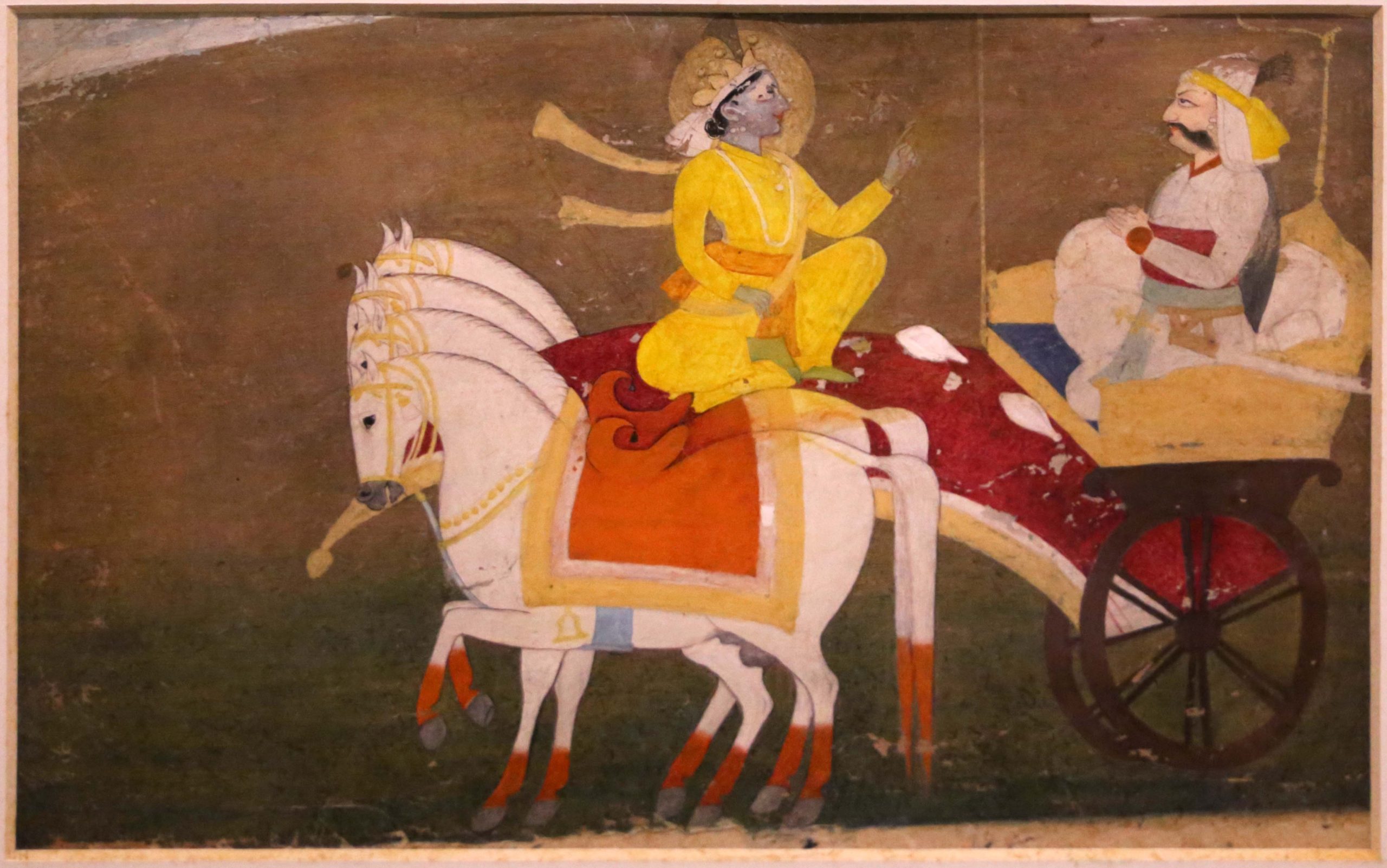
Photo caption: “Krishna &; Arjuna, 1800, Sailko, CC BY 3.0, via Wikimedia Commons”
Amidst this quiet devastation, Arjuna stepped down from his chariot, the same chariot that had carried him through eighteen brutal days of the battle. At the reins sat Lord Krishna as his charioteer, his guide and his anchor. Arjuna, still glowing in the haze of survival, turned to Krishna and said (perhaps with a trace of pride), “I won, Madhav.” Krishna didn’t correct him. He just asked him to step down. Once Arjuna was off, Krishna dismounted too. And the moment Krishna’s feet touched the earth, the chariot burst into flames. Startled, Arjuna asked, “What just happened?”
Krishna smiled and replied softly, “This chariot had been hit by many divine weapons during the war. My presence held it together. Had I left before you, it would’ve burned with you in it.” No drama. No divine thunder. Just the truth which was delivered gently. It wasn’t just a moment. It was a mirror.
Arjuna realised: it wasn’t just his strength or skill that brought him through. It was Krishna all along. Just like Arjuna all have our own chariots — careers, dreams, relationships. We polish them with pride. We believe they’ll carry us through anything. But sometimes, when the dust settles, we see what really protected us. It was not just our efforts but something much more deeper. Call it Krishna. Call it grace or God.
Though absent from the original Sanskrit Mahabharata text, this story lives on, cherished in Vaishnava lore and Bhakti poetry, passed down through generations sometimes as bedtime stories by dadis and nanis, and sometimes as moral lessons by the gurus. If you look closely through this story, we are not being told to diminish our efforts but we are being asked to see it clearly: that effort and grace are not enemies, but partners. “Strength without surrender hardens into ego. But strength with surrender becomes wisdom.”
I will end with something that my grandmother once told me, “Have the confidence of Krishna, but stay humble like the grass on the fields.”
Temple Showcase: Hoysaleswara Temple, Karnataka
There are some places in India that speak to the soul. The Hoysaleswara Temple in the quiet town of Halebidu, nestled amidst the lush landscapes of Karnataka, was once described as the “supreme climax of Indian architecture” (Percy Brown, 1949), even though its towers are now missing. Built in 1121 CE under the reign of King Vishnuvardhana of the Hoysala dynasty, this twin-shrined marvel, dedicated to Lord Shiva is not merely an architectural treasure but it is, for many, a mirror that gently shatters the ego.
Crafted from soapstone, the temple’s outer walls ripple with over 240 friezes, divine tales from the Ramayana, Mahabharata, and Puranik lore, interwoven with dancers, mythical beasts, and scenes of everyday life from 12th-century Karnataka. These beautiful figures of gods, goddesses, dancers, mythical beasts are sculpted with precision so refined, it leaves visitors breathless. Yet, amid all this artistry, a deeper feeling remains: humility.
The temple’s star-shaped platform, called a jagati, invites a kind of meditative walking. You don’t just go around the shrine, you spiral into it. Every step along the stone feels like a soft reminder: slow down, look closer, let go and surrender.
Inside, there are two sanctums—one for Hoysaleswara (Shiva) and another for Shantaleswara, named after Queen Shantala. And in front of them sits Nandi, Shiva’s greatest devotee and his vahan, carved from a single block of stone. Still. Watchful. Unmoving.
There’s something about the place that shifts your breath, makes you quieter inside. This isn’t a temple that demands devotion, it gently invokes it in the heart of each devotee. If you stay awhile and let the stone speak, you may notice something subtle: your ego doesn’t feel so important anymore. The layers of upadhis shatter, and you become one with your true nature. Like everything else here, the mind and heart become quieter. It is as though time is moving slower and your inner voice is the cosmos speaking.
The real magic of Halebidu isn’t in its stone and symmetry, rather it’s in the silence and stillness that gently bring you back to yourself: a state where ego dissolves and only endless divinity remains.
“Eradicate self-justification. Then alone you can annihilate your ego.”
-Swami Sivananda

